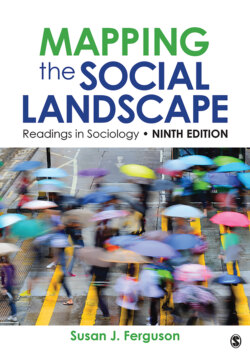Читать книгу Mapping the Social Landscape - Группа авторов - Страница 113
Adult Misperceptions
ОглавлениеChildren’s use of racial and ethnic concepts often goes unnoticed, even by adults in daily contact with them. This is illustrated by the responses of classroom teachers and the center director to preliminary reports on our research. Debi wrote two research reports, one for the classroom teachers and one for the director. After reading the reports, the teachers insisted to Debi that she must have been observing some other children and that these are not our kids. The director seemed determined to “guess” the identity of children whose incidents Debi described at a meeting. Throughout the episodes Debi described, he interrupted with remarks like I’ll bet that’s Sarah you’re talking about, isn’t it? His determination to attach names to the children revealed his investment in “curing” racism. He seemed determined to discover the culprits so unlearning might begin.
Adults’ strong need to deny that children can use racial and ethnic concepts is also revealed in the next account. Here two children are engaged in a discussion of “what” they are. Debi is sitting with all the children on the steps to the deck playing “Simon Says.” “Simon,” a child selected by teachers to lead the game, directs the main action, while Debi observes that Rita (3.5: White/Latina) and Louis (4: Black) are engaged in their own private side activity. While the game continues, Rita and Louis discuss what they are. What are you? Louis asks Rita, and without waiting for her reply announces, I’m Black and you’re White. No, she retorts, correcting him, I’m not White, I’m mixed. Louis regards her curiously, but at this moment Joanne, the lone Black teacher in the classroom, intervenes. You’re not mixed, Rita, you’re Spanish, she informs the child. What race am I? Joanne continues, trying to get the children to change the subject and glancing over at me anxiously. Rita replies, Mixed. Mixed!? Joanne, laughing, responds, Mixed with what? Blue, Rita says, looking only at her hands. Joanne is wearing a solid blue outfit. Oh no, honey, Joanne says, I’m Black too, like Louis, not mixed. What an interesting conversation you guys are having. Rita says nothing in response, and Louis remains silent throughout Joanne’s attempt at dialogue. Suddenly, “Simon Says” ends and the kids run to the playground, escaping Joanne’s questions. Joanne smiles and remarks to Debi, Boy, it’s really amazing what they pick up, isn’t it?
When Joanne intervened, Rita and Louis had to refocus their attention from a discussion between themselves about what they “are” to responding to Joanne’s questioning. The adult interruption silenced Louis completely and made Rita defensive and wary. As other research has demonstrated, adult involvement in children’s discourse can result in changes in the nature of the children’s relations (Danielewicz, Rogers, and Noblit 1996). Rita realized that she must avoid sanctions when Joanne introduced her own racial identity into the game, attempting to distract the children from what Joanne perceived as an argument based on racial differences. However, the children were engaged in an appropriate discussion about their origins. Rita is indeed a “mixed” Latina, for her mother is from one Latin American country and her father is from another Latin American country. Rita understood this and had on other occasions described trips to visit her father’s home. Louis is indeed Black and views Rita as White. Rita seemed to be trying to extend the concept beyond skin color and thus to educate Louis, until the teacher interrupted. Joanne’s assumption seemed to be twofold: that Rita was confused and that as a teacher Joanne must act preventively. Here the teacher focused on quashing prejudice rather than seizing an opportunity to listen to the children and discuss their racial and ethnic perspectives. Adults tend to control children’s use of racial and ethnic concepts and interpret children’s use of these concepts along prejudice-defined lines. Clearly, the social context of children’s learning, emphasized in the interpretive approach, includes other children and adults, but our accounts also demonstrate the way in which children’s sophisticated understandings are developed without adult collaboration and supervision….
